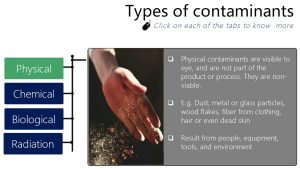- 21 February 2024
- 172
Foodborne Illness: Your Guide to Recovery and Prevention

Understanding Foodborne Illness
Foodborne illness, also known as food poisoning, occurs when you consume contaminated food or beverages. These contaminants can include bacteria, viruses, parasites, or toxins produced by microorganisms. Common symptoms of foodborne illness include:
- Nausea
- Vomiting
- Diarrhea
- Abdominal pain
- Fever
- Potential for severe cases leading to death
Types of Contaminants
Bacteria
Bacteria are one of the most common causes of foodborne illness. They can multiply rapidly in the right conditions, such as when food is stored at improper temperatures or when hygiene practices are inadequate. Explore more About (Eye Surgery) Examples of bacteria responsible for foodborne illness include:
- Salmonella
- E. coli
- Listeria
- Campylobacter
Viruses
Viruses are another culprit behind foodborne illness. They can be transmitted through contaminated food, water, or surfaces. Common viruses associated with foodborne illness include:
- Norovirus
- Hepatitis A
- Rotavirus
Parasites
Parasites are organisms that live in or on another organism (host) and benefit at the host’s expense. Parasites can contaminate food and water sources, leading to foodborne illness. Examples of foodborne parasites include:
- Giardia
- Cryptosporidium
- Toxoplasma
Toxins
Toxins produced by certain microorganisms can contaminate food and cause illness. These toxins may be present in food even if the microorganisms that produced them are no longer viable. Common examples include toxins produced by:
- Staphylococcus aureus
- Clostridium botulinum

Prevention Measures
Preventing foodborne illness requires a combination of proper food handling, storage, cooking, and hygiene practices.
Food Safety Practices
Wash Hands and Surfaces
Always wash your hands with soap and water before handling food and after handling raw meat, poultry, seafood, or eggs. Additionally, clean and sanitize kitchen surfaces, utensils, and cutting boards regularly to prevent cross-contamination.
Cook Thoroughly
Cook food to the appropriate internal temperature to kill harmful bacteria, viruses, and parasites. Use a food thermometer to ensure that meat, poultry, seafood, and eggs are cooked to the recommended temperatures.
Store Safely
Store perishable foods in the refrigerator at or below 40°F (4°C) and use them within their expiration dates. Keep raw meat, poultry, and seafood separate from other foods to prevent cross-contamination. Additionally, refrigerate leftovers promptly and reheat them to 165°F (74°C) before consuming.
Avoid Cross-Contamination
Prevent cross-contamination by using separate cutting boards, utensils, and plates for raw meat, poultry, seafood, and ready-to-eat foods. Be mindful of keeping raw foods separate from cooked or ready-to-eat foods to avoid spreading harmful bacteria.
Hygiene Practices
Practice Good Personal Hygiene
Maintain good personal hygiene habits, such as washing hands thoroughly with soap and water, especially after using the bathroom, changing diapers, or handling pets. Avoid preparing food for others if you are sick or experiencing symptoms of illness.
Stay Informed
Stay informed about food recalls and advisories issued by public health agencies. If you suspect that you have consumed contaminated food or beverages, seek medical attention promptly.

Recovery Strategies
If you or someone you know experiences symptoms of foodborne illness, it’s essential to take appropriate steps for recovery.
Hydration
Stay hydrated by drinking plenty of fluids, such as water, clear broths, and electrolyte solutions, to replace fluids lost through vomiting and diarrhea. Avoid alcohol, caffeine, and sugary beverages, as they can worsen dehydration.
Rest
Get plenty of rest to allow your body to recover from the illness. Avoid strenuous activities and focus on resting until symptoms improve.
Medications
In some cases, medications may be prescribed to alleviate symptoms such as nausea, vomiting, diarrhea, and fever. However, it’s essential to consult a healthcare professional before taking any medications, especially if you have underlying health conditions or are taking other medications.
Dietary Changes
Gradually reintroduce bland, easy-to-digest foods such as bananas, rice, applesauce, and toast (BRAT diet) as tolerated. Avoid spicy, fatty, or hard-to-digest foods until your digestive system has fully recovered.

| Contaminant | Source | Symptoms |
|---|---|---|
| Bacteria | Improper food storage, poor hygiene | Nausea, vomiting, diarrhea |
| Viruses | Contaminated food, water, surfaces | Abdominal pain, fever, diarrhea |
| Parasites | Contaminated food, water | Abdominal pain, diarrhea, fever |
| Toxins | Microorganism-produced toxins | Vomiting, diarrhea, paralysis |
Conclusion
Foodborne illness can have serious consequences, but by following proper food safety and hygiene practices, you can reduce your risk of contamination. Remember to wash hands and surfaces, cook food thoroughly, store food safely, and practice good personal hygiene. If you experience symptoms of foodborne illness, stay hydrated, get plenty of rest, and consult a healthcare professional if necessary. By taking proactive measures, you can protect yourself and your loved ones from the dangers of foodborne illness.

